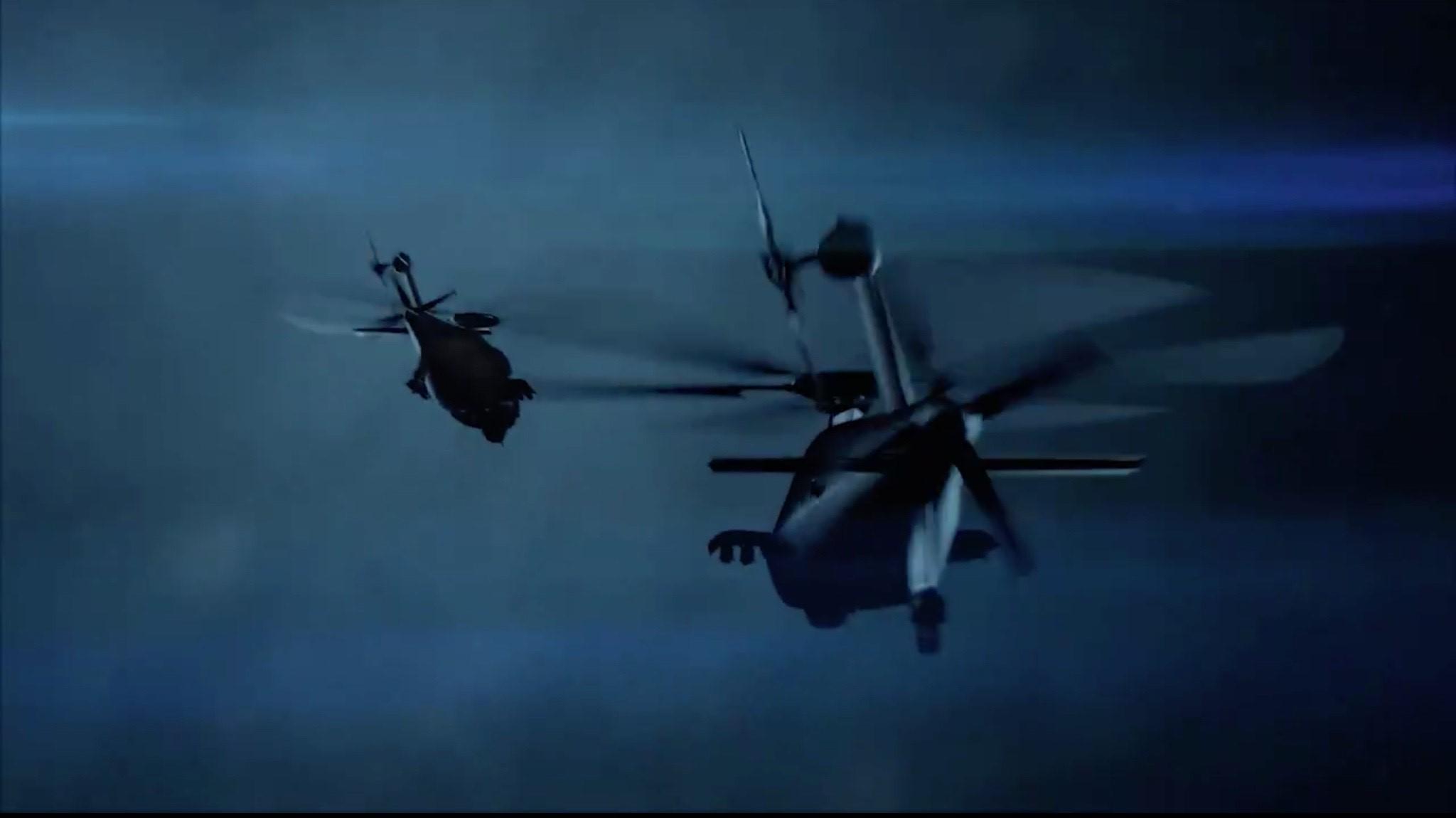
Boeing has revealed a thrust-compounded helicopter design for the U.S. Army’s Future Attack Reconnaissance Aircraft (FARA) program.
Images released in a Boeing video advertisement confirm a configuration featuring a six-bladed main rotor for lift and a four-bladed pusher propeller aft of and offset from a conventional, angled tail rotor. A ventral fin extends under the tail boom, likely to provide directional stability and tail-strike protection for the pusher-prop.
Other visible features on the aircraft shown in the Boeing-made video include stub wings for external weapons carriage, a tandem cockpit, a forward-looking infrared sensor and a nose-mounted machine gun. It was not clear from the video if Boeing’s FARA design also includes an internal weapons bay.
The design is shaped to meet the Army’s requirements to replace the Bell OH-58D’s armed scout role, which is now assigned on an interim basis to about half of the Boeing AH-64 fleet.
Boeing’s thrust-compounded approach to the FARA design indicates a high-speed capability. The Army has specified a maximum speed of at least 180 kt., which lies just beyond the traditional limit of 170-kt. for single-main-rotor helicopters limited by the aerodynamic phenomenon of retreating blade stall.
The new images reveal the last of the five rotorcraft teams bidding for the FARA prototyping program.
AVX is proposing a coaxial compound helicopter with side-by-wide seating, articulated rotors, wing and ducted fans. Bell is bidding a tandem-seat helicopter with articulated main rotor, canted ducted tail rotor and supplemental power unit. Karem Aircraft’s winged compound helicopter has side-by-side seating, an actively controlled rigid rotor, tilting wing and swiveling tail-rotor/propulsor. Sikorsky is proposing a coaxial rigid-rotor compound helicopter with tail propulsor and side-by-side seating.

Comments
Secondly. Coaxial rigid rotor designs have better agility than articulated ones, and using a pusher prop layout (electric powered?) are 40/50 knots faster; Boeing know this.
So why show a design with both a tail rotor and a prop, if this was an LM design I'd believe it had a strong aroma of skunk!